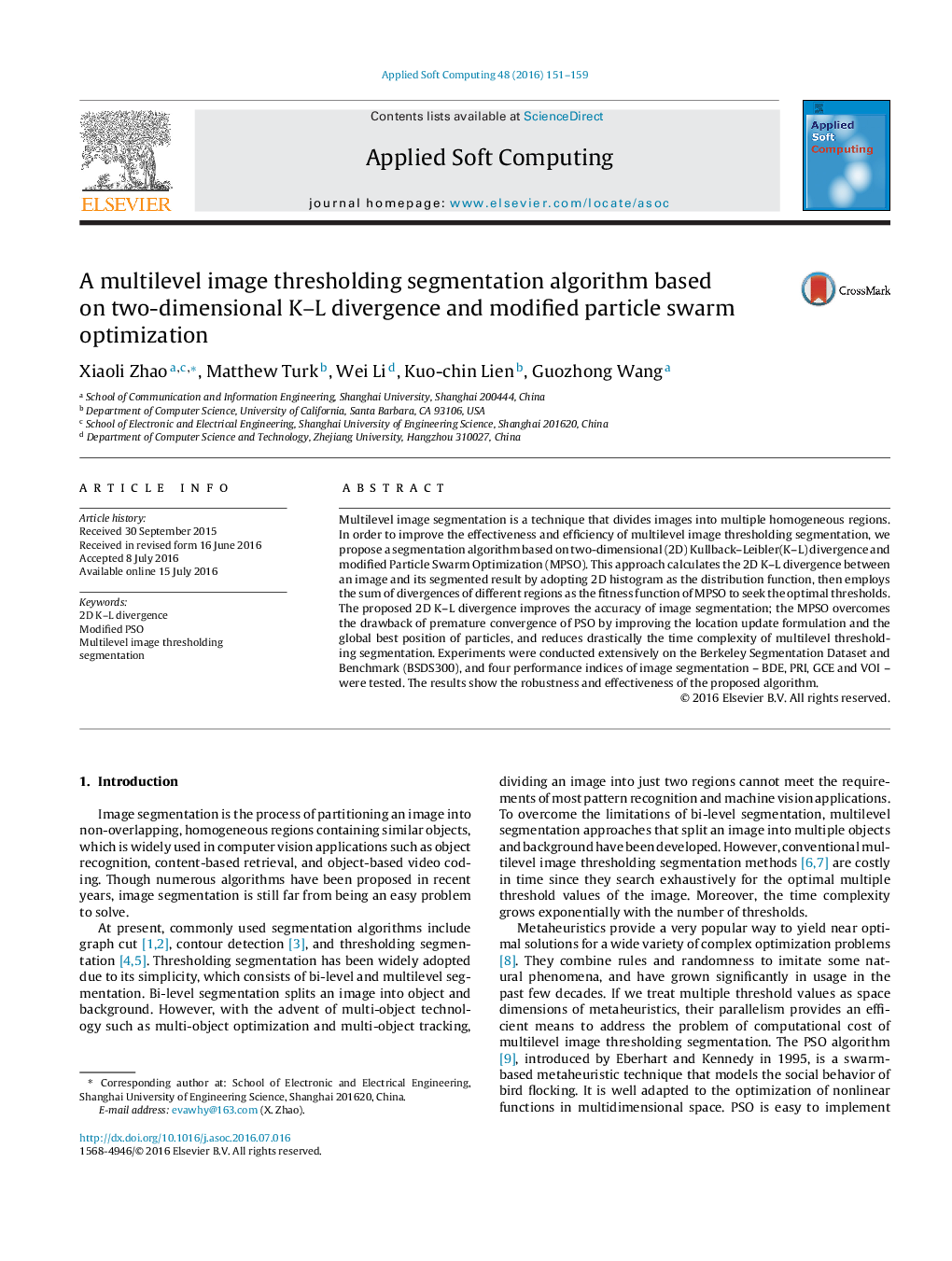| Article ID | Journal | Published Year | Pages | File Type |
|---|---|---|---|---|
| 494540 | Applied Soft Computing | 2016 | 9 Pages |
•We propose the 2D K–L divergence applied to multilevel image segmentation and infer the formulation of 2D K–L divergence as an objective function of multilevel image segmentation.•We propose MPSO that modifies the location update formula and the global best position of particles to overcome the premature convergence of PSO.•We propose a scheme that denotes 2D K–L divergence as the fitness function of MPSO, which improves the effectiveness of the segmentation and reduces the time complexity.
Multilevel image segmentation is a technique that divides images into multiple homogeneous regions. In order to improve the effectiveness and efficiency of multilevel image thresholding segmentation, we propose a segmentation algorithm based on two-dimensional (2D) Kullback–Leibler(K–L) divergence and modified Particle Swarm Optimization (MPSO). This approach calculates the 2D K–L divergence between an image and its segmented result by adopting 2D histogram as the distribution function, then employs the sum of divergences of different regions as the fitness function of MPSO to seek the optimal thresholds. The proposed 2D K–L divergence improves the accuracy of image segmentation; the MPSO overcomes the drawback of premature convergence of PSO by improving the location update formulation and the global best position of particles, and reduces drastically the time complexity of multilevel thresholding segmentation. Experiments were conducted extensively on the Berkeley Segmentation Dataset and Benchmark (BSDS300), and four performance indices of image segmentation – BDE, PRI, GCE and VOI – were tested. The results show the robustness and effectiveness of the proposed algorithm.
Graphical abstractFigure optionsDownload full-size imageDownload as PowerPoint slide
